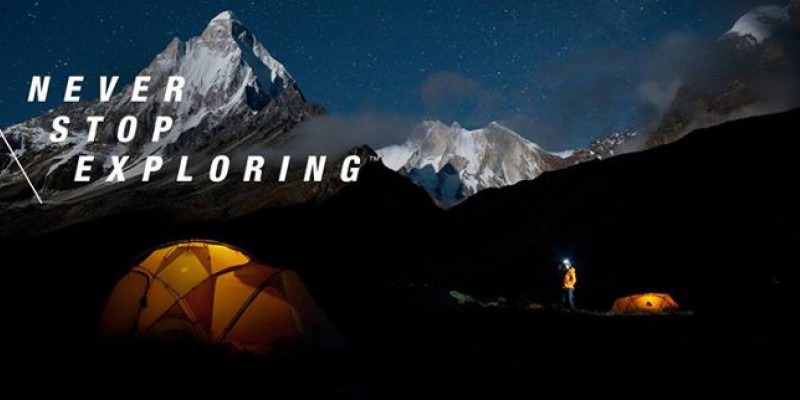
What is an Archetype?
'Archetype,' has become something of a buzzword in the marketing community, but what, precisely, is it? Derived from the ancient Greek, archetypes means the "original pattern," of which all other similar persons, objects, or concepts are derived, copied, or emulated.
The psychiatrist Carl Jung took this idea a step further during his studies of the human psyche, and described an archetype as a universally recognized character, be it thought or image, whose meaning is the same in any culture or group.
This has evolved into the concept of brand archetypes, whereby companies take on these characters and use emotional associations instead of words as a simple and direct way to convey the core values and/or purpose of their brand. By using archetypes, brands are able to bypass the “logic circuits” in the human brain and introduce an intimate and personal aspect into their marketing by appealing directly to consumers’ emotions.
Meet the Archetypes
Although archetypes are continuously evolving, most marketers prefer to use the twelve primary categories set forth by Jung and firmly established in the 21st century. Each one conveys distinct attributes, traits, and values to a brand.
Sage: The sage seeks to understand the world, to reflect and discover truth while sharing knowledge and expertise with others. Google and the BBC are great examples of this brand archetype.
Magician: Imagination is vital to this archetype, as is using vision to transform the world, create new experiences and bring the impossible to life. Think Disney, Intel and Dyson on this one.
Hero: The hero is rarely subtle. Striving to improve the world around them using their own strengths and courage, they overcome obstacles and inspire others to do the same. Nike and Airbus both reflect this archetype.
Caregiver: Providing for needs, the caregiver is compassionate while helping others feel valued, cared for, and safe. Brands that appear to nurture and protect, such as Johnson’s Baby, Pampers, and Volvo, are ideal models.
Explorer: The explorer archetype pushes limits and boundaries while discovering freedom and the unfamiliar. North Face (see below), Jeep, and even Starbucks convey this archetype.

Revolutionary: Nonconformity and breaking the rules stereotype this outlaw archetype. It challenges the norm and finds a different way of doing things. Harley Davidson, MTV, and Virgin all embrace unconventionality.
Lover: The lover archetype is passionate, intimate, and desires beauty in a relationship that pleasures all of the senses. Some businesses in this category are Godiva, Victoria’s Secret, and Versace.
Creator: The creator archetype thrives on innovation and gives lasting form to its creative visions. Adobe, Apple (see below), and Lego are brands of this archetype.

Ruler: This archetype does not hide its desires for control and power. It displays leadership, influence, and premium status amongst the community. Microsoft, American Express, and Mercedes-Benz exude these characteristics.
Jester: Life is too short to take seriously, so live in the moment and enjoy things. The jester archetype is all about having fun, no matter the situation. Think of companies like Old Spice, ComparetheMarket.com and M&M’s.
Everyman: The regular guy/girl archetype simply wants to connect with others and belong. They are friendly, unpretentious, and approachable. These are brands such as Asda, Ikea, and McDonald’s.
How can they Impact your Business?
It may be impossible to overstate the importance of brand archetypes for any business, large or small. In an age of growing online consumer communities, a correctly chosen archetype serves as an emotional hook cast into the mind of the customer that forms a positive correlation between your brand and their intuition. Devising an accurate brand archetype, however, is essential.
Accurately defining your archetype will provide invaluable insight into the core values and unique characteristics of your company which is crucial in determining who your target audiences should be and developing suitable marketing strategies.
Archetypes and Cultural Groups
A particular archetype, however, may not have the same constructive influence across cultural groups. Possessing the characteristics of a ruler, for example, may be lauded in one country, and despised in another.
Cultural conditioning inhibits a single trait from succeeding across diverse groups, making it essential to understand the context of your archetype in the frame of cultural differences. An archetype speaks about the company, but fundamentally it is a way to connect with the target market. So insure that the marketing message is one that will be welcomed in your target region.
Conclusion
Cultural discretions aside, archetypes are crucial in establishing a congruency between your company, your message, and the consumer. Establishing an archetype for your business early on will help engender consistency in how you develop your business image, which in turn will help galvanise a sense of trust, consistency and, ultimately, reliability in your brand.
Brand archetypes can even help you better understand your own business and generate focused marketing content that emphasises the characteristics you wish to project. If the company remains faithful to its values, it will become known for more than just its product, it will become known for what it says as a brand.
About the Author
John Lanyon is Creative Director at Hurricane Media, a video production and content marketing agency based in Bristol. An award winning film maker, John directed the lauded short documentary ‘Who’s Lenny’ which won Best Short Film at the Royal Television Society Awards in 2012. You can connect with Hurricane on Twitter or Facebook or check them out on their YouTube Channel.
- Log in to post comments
